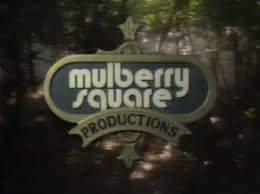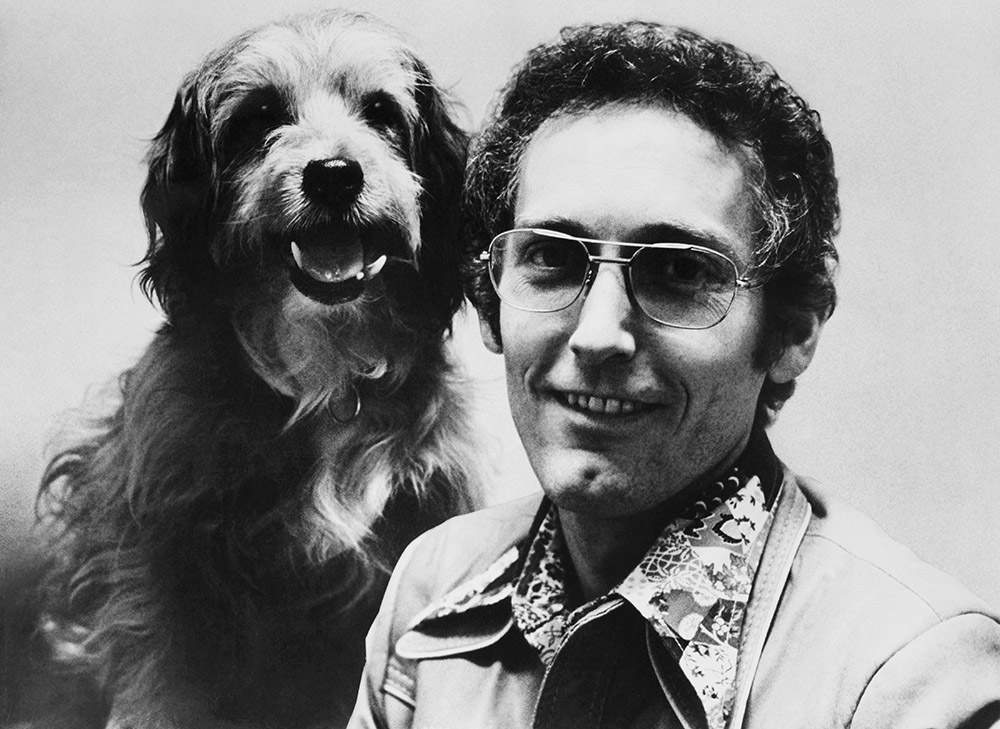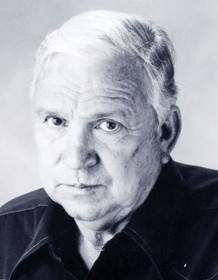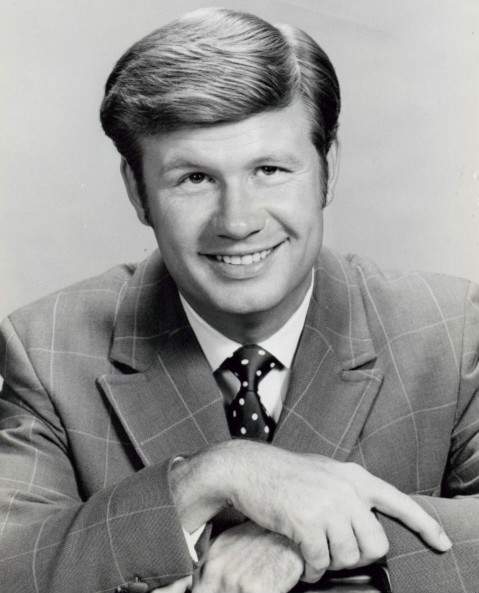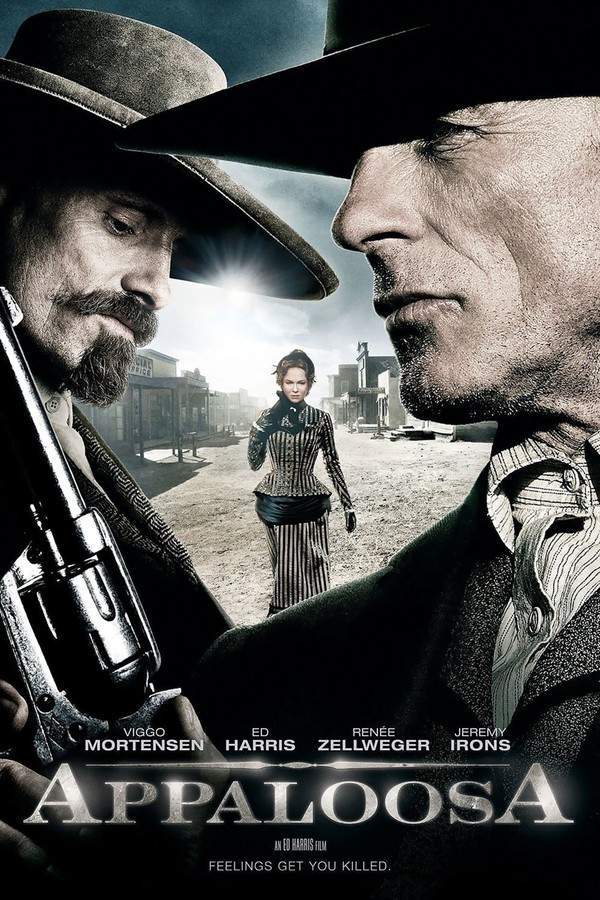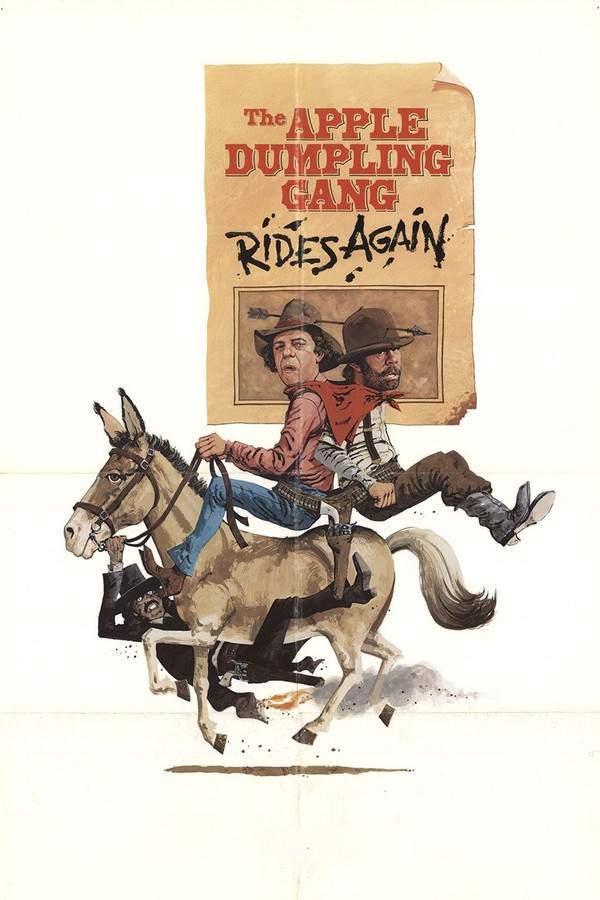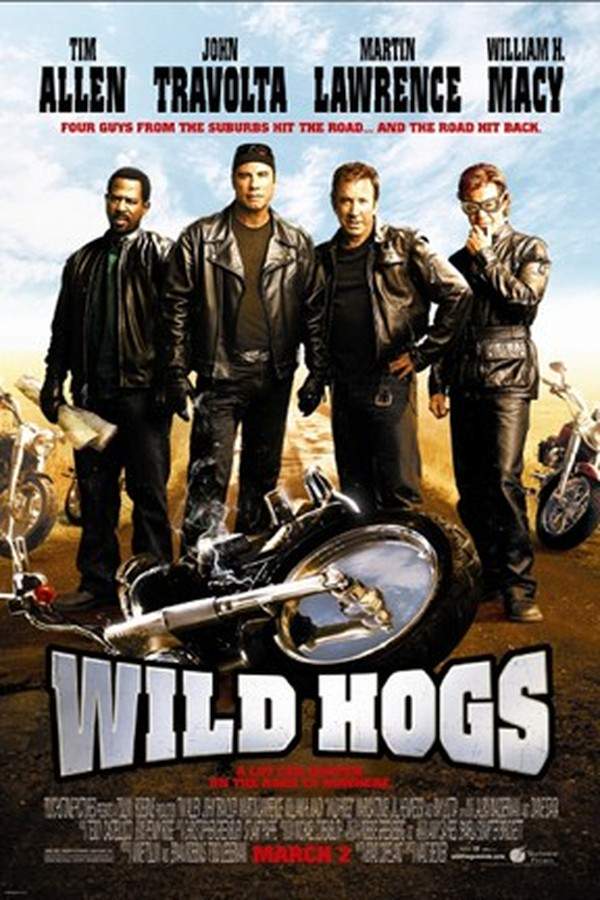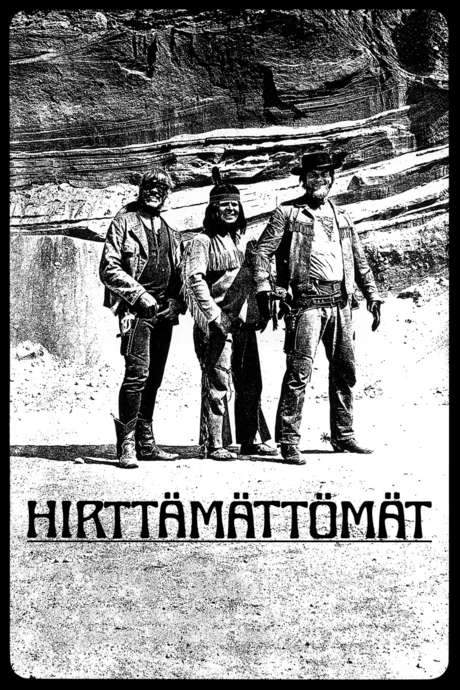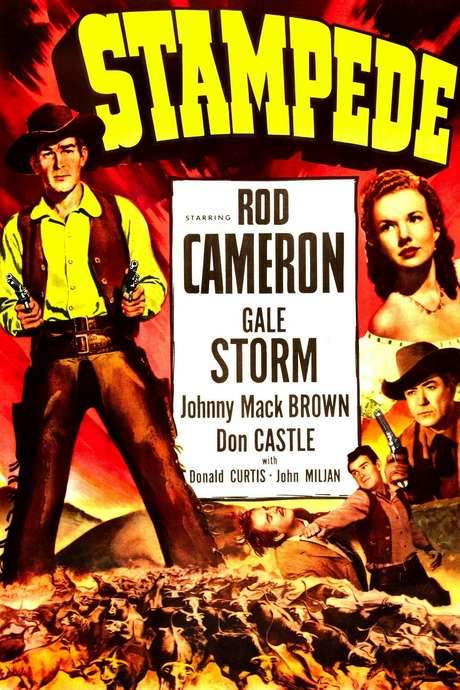Hawmps! 1976
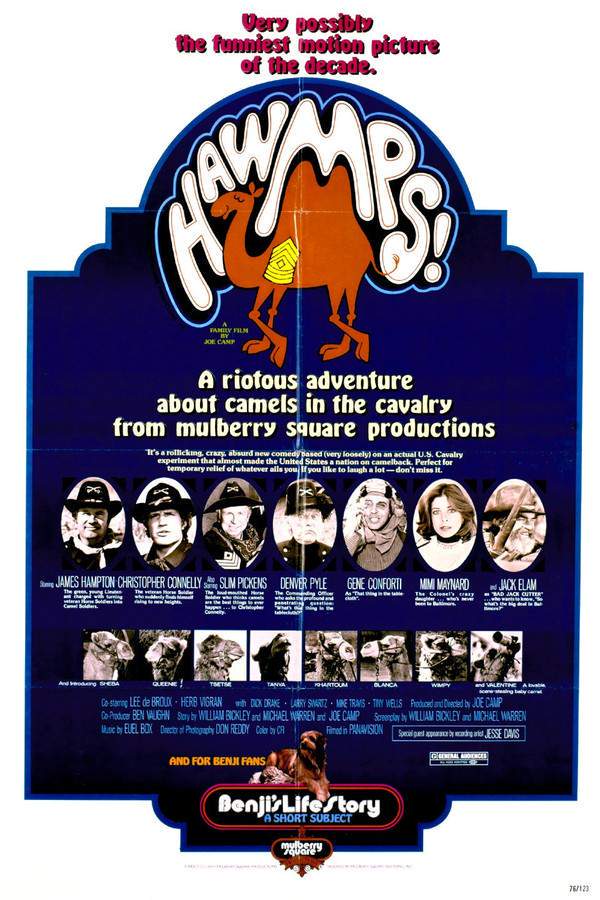
A hapless Army officer and his loyal companion attempt to revolutionize the Texas cavalry by introducing camels instead of horses. Their ambitious plan quickly spirals into hilarious chaos as they struggle to adapt the unfamiliar animals to the challenging terrain of the American West, encountering resistance and unexpected complications along the way.
Does Hawmps! have end credit scenes?
No!
Hawmps! does not have end credit scenes. You can leave when the credits roll.
Meet the Full Cast and Actors of Hawmps!
Explore the complete cast of Hawmps!, including both lead and supporting actors. Learn who plays each character, discover their past roles and achievements, and find out what makes this ensemble cast stand out in the world of film and television.
External Links and Streaming Options
Discover where to watch Hawmps! online, including streaming platforms, rental options, and official sources. Compare reviews, ratings, and in-depth movie information across sites like IMDb, TMDb, Wikipedia or Rotten Tomatoes.
Ratings and Reviews for Hawmps!
See how Hawmps! is rated across major platforms like IMDb, Metacritic, and TMDb. Compare audience scores and critic reviews to understand where Hawmps! stands among top-rated movies in its genre.

50
Metascore
tbd
User Score

5.4 /10
IMDb Rating

43
%
User Score
Take the Ultimate Hawmps! Movie Quiz
Challenge your knowledge of Hawmps! with this fun and interactive movie quiz. Test yourself on key plot points, iconic characters, hidden details, and memorable moments to see how well you really know the film.
Hawmps! Quiz: Test your knowledge about the unconventional camel experiment led by Lieutenant Clemmons in the comedic tale of Hawmps!.
In what year does the story of Hawmps! take place?
1854
1861
1876
1845
Show hint
Full Plot Summary and Ending Explained for Hawmps!
Read the complete plot summary of Hawmps!, including all major events, twists, and the full ending explained in detail. Explore key characters, themes, hidden meanings, and everything you need to understand the story from beginning to end.
As Howard Clemmons captivates his grandchildren with engaging stories of his adventurous past, he transports them back to the year 1854. At this time, Clemmons, portrayed by Slim Pickens, was a young U.S. Cavalry Lieutenant thrust into an unusual experiment. Lacking seniority and notable influence within the army, Clemmons was selected for his modest demeanor to spearhead a remarkable project: employing camels as cavalry mounts in the arid landscapes of the southwestern United States.
His reminiscence begins at Fort Val Verde, Texas, where he is met by Sgt. Uriah Tibbs, played by James Hampton, who eagerly anticipates the arrival of Arabian horses. A mischievous tone creeps into Clemmons’ narration as he highlights Tibbs’ fierce competition for a spot in this esteemed initiative, leaving Tibbs puzzled as to why Clemmons remains secretive about the true identity of his “Arabian” mounts. Meanwhile, Col. Seymour Hawkins, the fort’s commander, seems more preoccupied with perfecting his cannon skills than paying attention to Clemmons’ camel aspirations.
As Clemmons inspects the assembled troops, including Nathaniel R. Higgins, played by Denver Pyle, who reenlisted solely for the privilege of riding a grand Arabian horse, a conflict stirs within Clemmons. Torn between divulging the truth and maintaining the facade surrounding the camels, his hesitation is interrupted when a careless cook douses him with a bucket of dishwater.
Later, while at the local saloon with Tibbs to discuss their ambitious project, they encounter the furious Sgt. Naman Tucker, whose ire is directed at Clemmons for the false promises of Arabian horses to his men. In a moment of awkwardness, Clemmons slides under the table as the two sergeants erupt into a brawl.
With the dawn of a new day, camels finally arrive at the fort, only for the cavalrymen to withdraw in alarm, leaving Clemmons to grapple with the challenges of camel handling. The skilled Hi Jolly, who is well-versed in all things camel, steps forward to assist Clemmons as they navigate the town streets. This escapade causes chaos: horses leap in terror, ladies scream, dogs bark frantically, a wagon overturns, and a barrel bursts, leaving Col. Hawkins’ daughter, Jennifer, covered in sticky molasses. Enraged, the Colonel storms into Clemmons’ quarters, threatening to cancel the entire operation. Nevertheless, Clemmons remains steadfast, asserting that he has received direct orders from Jefferson Davis, the Secretary of War. That night, Jennifer visits him, pouring molasses over his head in playful revenge and inviting him to afternoon tea.
As Hi Jolly initiates the camels’ training, Tucker rides in to provoke Tibbs’ men. Clemmons warns Tucker that further disrespect will lead to serious repercussions. Meanwhile, the pressure mounts and Clemmons faints from the stress. The soldiers’ attempts to ride the camels result in comical failures, culminating in chaotic spills into dirt and water troughs. One night, Tucker makes a wager claiming he can lasso a camel, and when he succeeds, the agitated animal bolts, dragging him along.
As weeks slip by, Clemmons and the men gradually learn the art of camel riding, while he finds himself romantically involved with Jennifer. However, his luck takes a turn when he’s tasked with capturing a Native American renegade. In their pursuit, Clemmons and his men are thrown off their camels at a river, leading Hi Jolly to explain that camels are naturally wary of water. Had Clemmons demonstrated the safety of the river, they would have navigated it without issue. During a quiet evening stroll, Clemmons confides in Jennifer about his struggles with the camel project, prompting her to challenge him to fight for his beliefs and career.
In a bold move, Clemmons proposes a daring 300-mile race against Tucker’s horses, intending to prove the value of his camel initiative. When Hawkins declines, Clemmons resorts to deception, claiming the project has the President’s endorsement. Unfortunately, Hi Jolly suffers injuries from a brawl, leaving him off the roster for the crucial journey. With encouragement from Jennifer, who gifts him a book on camel care, Clemmons feels invigorated and more connected to her.
As the race begins, cannon fire heralds the start, and Tucker’s horses charge ahead. Yet, fueled by Clemmons’ resolve, his men begin to catch up. Just when victory seems imminent, disaster strikes as Tucker and his men fall into the clutches of the nefarious outlaw Bad Jack Cutter at Dagger’s Point.
Fueled by righteous anger, Clemmons launches a rescue mission, enlisting the help of Tibbs. They adopt disguises and integrate themselves into Bad Jack’s gang, risking everything to save their captured comrades. Upon discovering Tucker and his men locked in a cell, their efforts to free them are met with a mix of tactics—first with a horse and finally using the strength of a camel to burst open the prison bars. However, during their escape, Tucker’s men abandon Clemmons and Tibbs, resulting in an all-out gunfight against overwhelming odds.
Just as desperation sets in, Clemmons’ men arrive astride their camels, unleashing a valiant charge that sends the outlaws reeling. Yet, amid the celebration, Clemmons realizes a critical water barrel has been lost, leaving the group parched in an unforgiving landscape. While Tibbs urges a return to the river, Clemmons stubbornly presses forward, believing the mountains will lead them to salvation. After two grueling days of riding, they arrive at an oasis that turns out to be a desert mirage—dry and unwelcoming.
As tensions flare, Clemmons unexpectedly finds water, but his triumph is swiftly replaced by peril as Black Jack ambushes him. A fierce gunfight ensues, but fortune intervenes when a book Jennifer gave him serves as an unlikely bulletproof shield. As dawn breaks, Clemmons’ gallant cavalry troop confronts Tucker and his weary horsemen near Dos Rios. In a moment of celebration, he learns through a telegram that Congress has authorized the construction of a transcontinental railroad, making the camel project obsolete. Despite protests from Tibbs and his comrades about the fate of the camels, Clemmons must acquiesce to orders to release them into the wild.
As Howard concludes his marvelous tale to enraptured grandchildren, his wife, Jennifer, calls for dinner from inside the house. With a warm smile, he steps out to ring the dinner bell, interrupted only by Hi Jolly, Higgins, and Tibbs, who inform him that one of their camels is about to give birth. As the four old soldiers shuffle toward the barn, Higgins reflects on the monotony of his new routine, lamenting, “Each day I must walk a mile for a camel,” his voice tinged with a mix of resignation and affection for the misadventures of his past.
Uncover the Details: Timeline, Characters, Themes, and Beyond!

Coming soon on iOS and Android
The Plot Explained Mobile App
From blockbusters to hidden gems — dive into movie stories anytime, anywhere. Save your favorites, discover plots faster, and never miss a twist again.
Sign up to be the first to know when we launch. Your email stays private — always.
Watch Trailers, Clips & Behind-the-Scenes for Hawmps!
Watch official trailers, exclusive clips, cast interviews, and behind-the-scenes footage from Hawmps!. Dive deeper into the making of the film, its standout moments, and key production insights.
Hawmps! Themes and Keywords
Discover the central themes, ideas, and keywords that define the movie’s story, tone, and message. Analyze the film’s deeper meanings, genre influences, and recurring concepts.

Unlock the World of Movies with Our Comprehensive Wiki
Dive into our Movie Wiki for in-depth film encyclopedia entries, including cast biographies, production trivia, plot synopses, behind-the-scenes facts, and thematic analyses. Whether you’re researching iconic directors, exploring genre histories, or discovering hidden easter eggs, our expertly curated movie database has everything you need to fuel your cinematic passion.

Similar Movies To Hawmps! You Should Know About
Browse a curated list of movies similar in genre, tone, characters, or story structure. Discover new titles like the one you're watching, perfect for fans of related plots, vibes, or cinematic styles.
Quick Links: Summary, Cast, Ratings, More

What's After the Movie?
Not sure whether to stay after the credits? Find out!
Explore Our Movie Platform
New Movie Releases (2025)
Famous Movie Actors
Top Film Production Studios
Movie Plot Summaries & Endings
Major Movie Awards & Winners
Best Concert Films & Music Documentaries
Movie Collections and Curated Lists
© 2025 What's After the Movie. All rights reserved.


